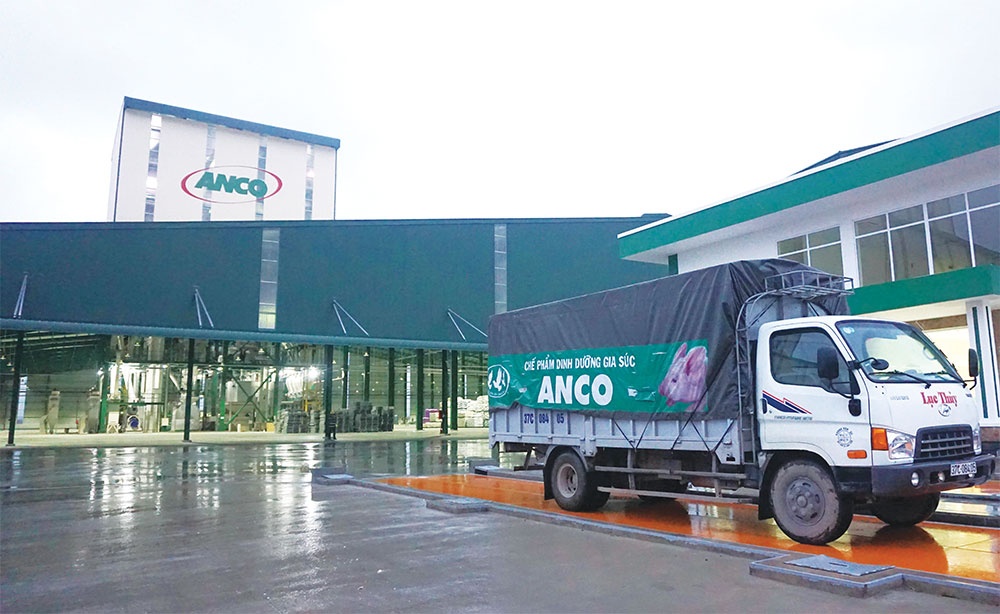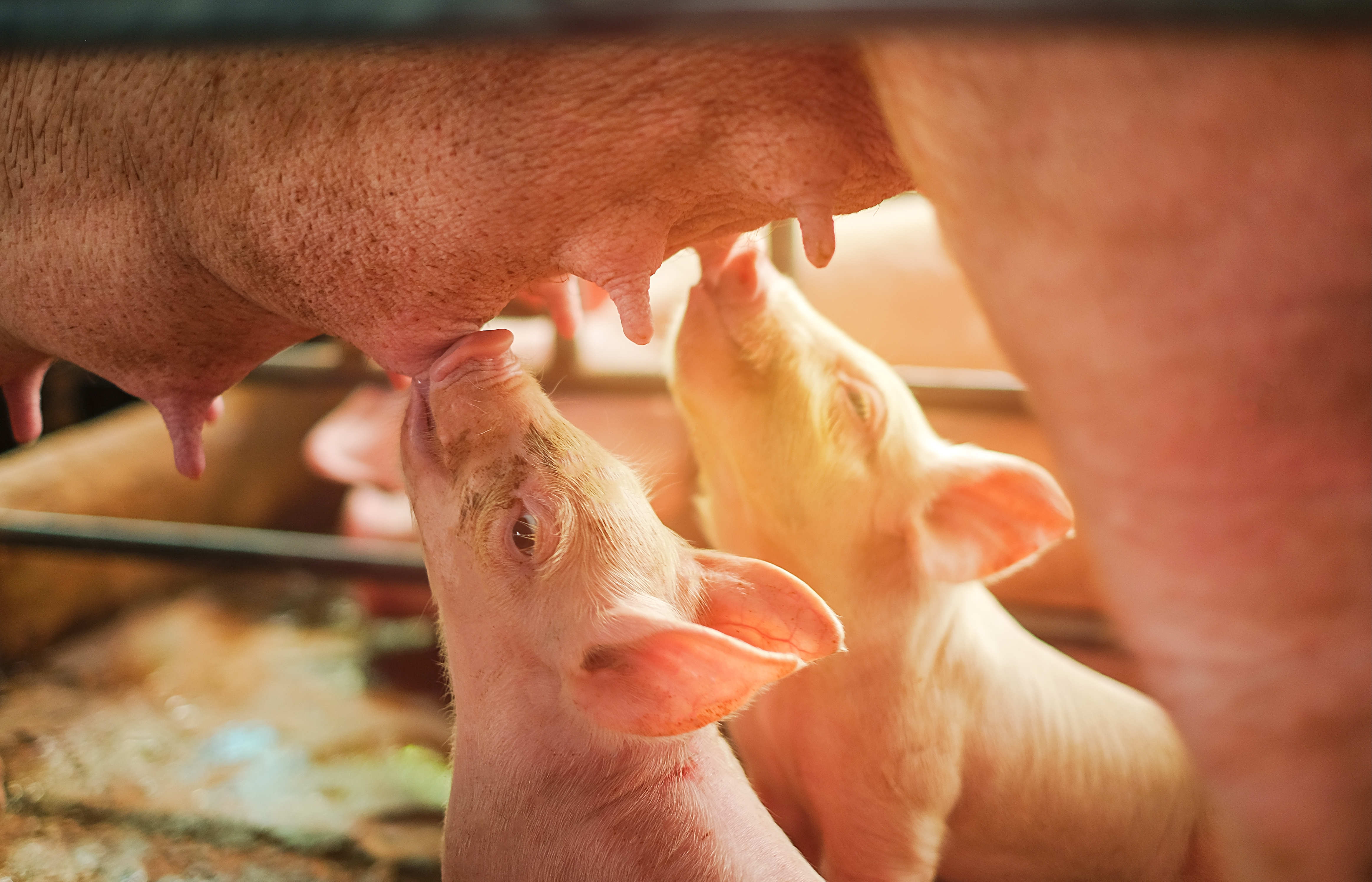Livestock groups report gloomy profit
With just weeks left of 2022, many livestock companies face challenges to reach their business targets. Dabaco Vietnam announced financial statements for the first three quarters of 2022. It acquired around $405.6 million in revenues, up 20 per cent on-year. In the third quarter alone, the company reported revenues of nearly $154.8 million and $8.5 million in after-tax profit, signifying increases of 33 per cent and 49 per cent respectively.
 |
| Selling prices of pigs are at a fairly low level while input costs are biting into profits for some groups, Le Toan |
Nevertheless, the bright business results cannot offset the gloomy results of the consolidated business results in the first two quarters of 2022, which came with the surge in input costs.
In the first half of this year, Dabaco reported revenues of just over $250 million, up 13.8 per cent; however, after-tax profit dropped by 96.1 per cent to $995,000.
Dabaco set the target to acquire $980.4 million in revenues and $39.9 million in after-tax profit. Hence, thus far it merely touches 41 per cent of expected revenues and one-quarter of after-tax profit so far.
According to figures calculated by VNDIRECT Securities Corporation, in the first nine months of 2022, the consolidated revenues of listed livestock companies decreased by 31 per cent on-year. Their consolidated net profit declined by 6.2 per cent on-year and gross profit decreased 31 per cent on-year. Listed livestock companies in Vietnam include Dabaco, Masan MEATLife, Hoang Anh Gia Lai, Vissan, Hoa Phat, and others.
Explaining the reason for this situation, the board of directors at Dabaco stated that the livestock industry has been facing difficulties from the COVID-19 pandemic as well as epidemics in livestock and poultry, especially African swine fever.
“In addition, the complicated developments of the Russia-Ukraine conflict have also affected the supply chain of input materials and international trade and transport activities, resulting in high prices for feed ingredients and lowered profits for livestock companies,” the board noted.
According to statistics from the Department of Livestock Production under the Ministry of Agriculture and Rural Development (MARD), Vietnam’s animal feed industry is largely dependent on imported materials. Out of a total of 35 million tonnes of feed ingredients used domestically every year, Vietnam is only self-sufficient for about 13.1 million tonnes, accounting for around 37 per cent. The rest has to be imported.
According to the MARD, one of the key crops for the livestock industry is maize, but maize kernels’ domestic output can only meet one-fifth of the demand, while the remainder must rely on imports.
Meanwhile, the selling prices of pigs remains at a low level, and the imbalance in input cost and selling prices is corroding manufacturers’ profits.
Le Xuan Huy, deputy general director of C.P.Vietnam – the largest livestock company in the country – said that along with those challenges, the purchasing power for pigs on the market is also falling and a large number of companies in industrial parks are either cutting working hours or laying off some employees due to lack of orders.
“In the past, many livestock companies expanded the breeding networks, causing the supply to grow above demand. Thus, companies were forced to adjust the selling prices of pigs to lower levels to stimulate the market, which also impacts the profit of companies,” Huy said.
According to the Vietnam General Confederation of Labour, 1,230 businesses and manufacturers in 44 cities and provinces have been forced to either cut working hours or lay off some of their employees. Accordingly, approximately 41,500 people have lost their jobs and over 430,000 people have lost some working hours.
As the domestic livestock industry is facing difficulties, in late October, MARD Deputy Minister Phung Duc Tien signed a document for the Ministry of Finance (MoF) that proposed an adjustment on the import tax on animal feed – namely, eliminating the import tax on soybean meal from the current 2 per cent to promote domestic livestock production.
To reduce dependence on imported raw materials, the MARD is also preparing a draft decree on investment policies to support the production, processing, preservation, and consumption of domestic raw materials.
At the same time, the MARD has mentioned policies to develop maize and soybean material to take the initiative in growing at least 50 per cent of the needed raw materials domestically, thus gradually reducing dependence on imported feed.
 | Livestock groups satisfied despite drop in recent profits While supply chain disruptions exacerbated by rising input material prices have brought down revenue and profit from standout heights in 2020, many of the biggest livestock companies in Vietnam are looking at first-half year results with a sense of satisfaction. |
What the stars mean:
★ Poor ★ ★ Promising ★★★ Good ★★★★ Very good ★★★★★ Exceptional
Related Contents
Latest News
More News
- Acecook Vietnam: 30 years of creating happiness (January 08, 2026 | 08:00)
- Sustainability a core value for DKSH’s vision (January 07, 2026 | 16:00)
- People encouraged to contribute and grow at AstraZeneca Vietnam (January 07, 2026 | 15:48)
- Dat Bike accelerates sustainable mobility (January 07, 2026 | 15:24)
- Innovation to support modern healthcare development (January 07, 2026 | 10:00)
- Six localities record double-digit growth as regional performance diverges in 2025 (January 06, 2026 | 18:00)
- E-commerce market undergoes transformation amid rising competition and regulation (January 06, 2026 | 17:54)
- Vietnam’s industrial output hits seven-year high in 2025 (January 06, 2026 | 17:47)
- GELEX’s credit rating outlook upgraded to 'Positive' by VIS Rating (January 06, 2026 | 16:49)
- Finance sector lays firm groundwork for 2026 after major reform (January 06, 2026 | 15:30)

 Tag:
Tag:



















 Mobile Version
Mobile Version